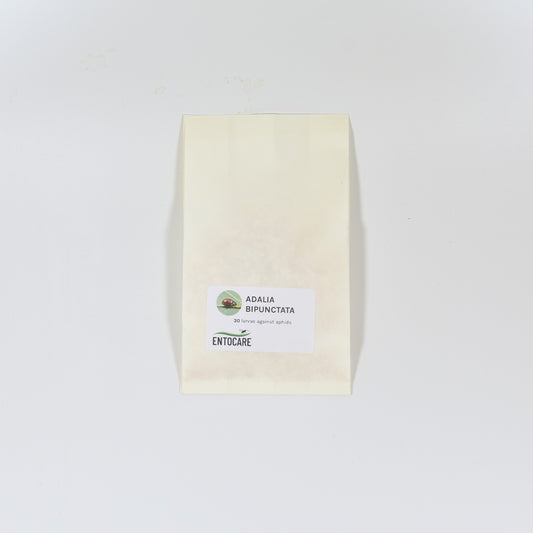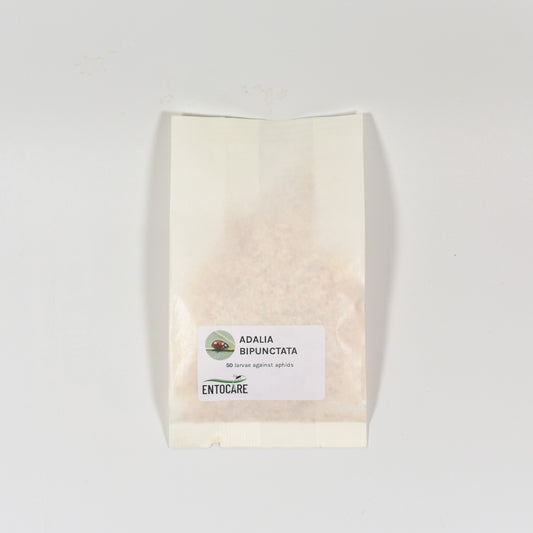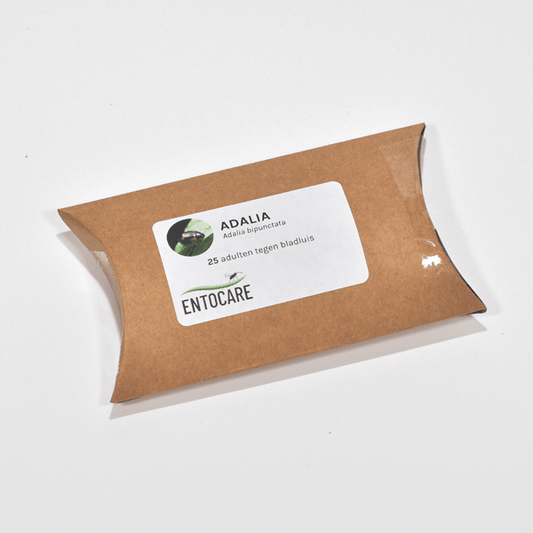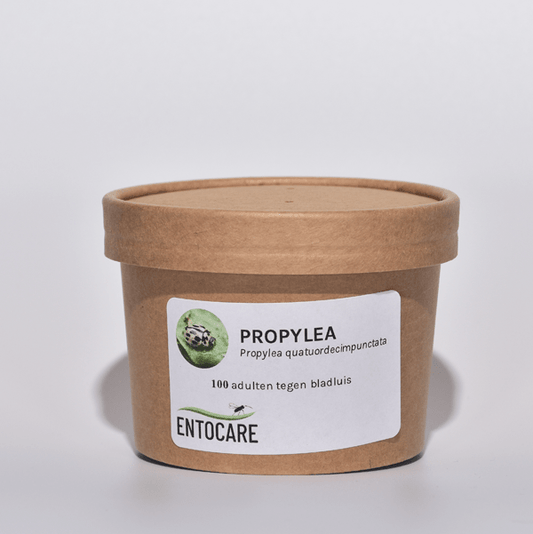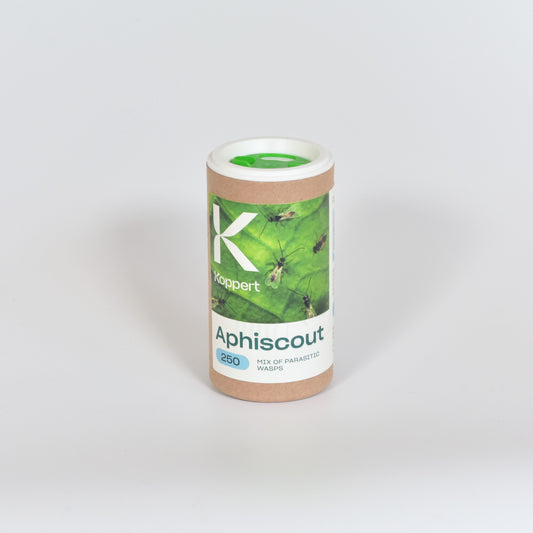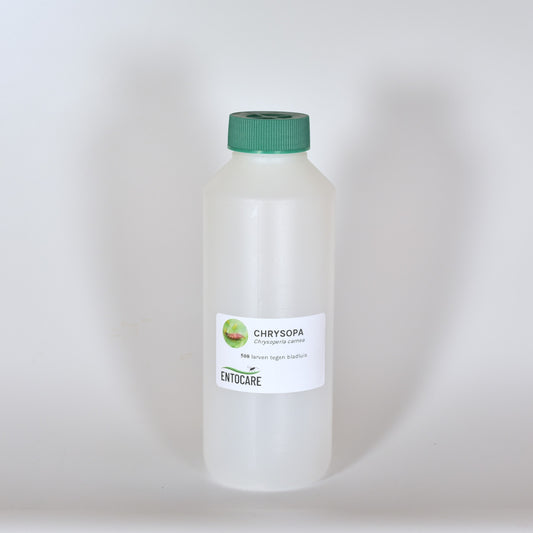
How to recognize foxglove aphids
Foxglove aphids are average-sized (1.8-3.0 mm) and round to oval shaped. The colour can vary from shiny, light green to dull, brown green. The siphons are rather long and thin. Their proximal part is broader and has a dark colored tip. The antennae are long (1.3-1.5 x body length) with many dark bands. The legs are also long with dark colored knees and ankles. The cauda is short and green. Younger stages have striking bright green spots around the siphons. Winged individuals have a yellow-brown head and stripes across their back, which are interrupted in the middle. The aphid is mobile and sensitive for disturbance. In greenhouse conditions only asexual reproduction takes place. There is no hostplant change.
Foxglove aphid damage and distribution
The aphids can be found across the plant in colonies, often on stems or young plant parts but also on lower plant level. The aphids feed on plant saps from plants causing leaf-curling and leaf-discoloration (yellow spots that look similar to virus infections). With heavy infestation shoots can be hampered in growth. The aphids produce a lot of honeydew which can make fruits sticky and dirty. The honeydew acts as a growth medium for black sooty mold fungus, which hampers photosynthesis and cause cosmetic damage. Like potato aphids, foxglove aphids can transmit viruses.
Products against Foxglove aphid
-
ADALIA larvae - 30
Vendor:Entocare eigen kweekRegular price €10,38 EURRegular priceUnit price / per€10,38 EURSale price €10,38 EUR -
ADALIA larvae - 50
Vendor:Entocare eigen kweekRegular price €20,00 EURRegular priceUnit price / per€20,00 EURSale price €20,00 EUR -
ADALIA ladybirds - 25
Vendor:Entocare eigen kweekRegular price €27,25 EURRegular priceUnit price / per -
PROPYLEA QUATUORDECIMPUNCTATA ladybirds - 100
-
APHISCOUT - 240
-
ADALIA larvae - 100
-
ADALIA larvae - 250
-
CHRYSOPA - 500
Vendor:KoppertRegular price €33,49 EURRegular priceUnit price / per€33,49 EURSale price €33,49 EUR
-
Foxglove aphid life cycle
viviparous
development time 7-10 days
lifespan 1-2 weeks
parthenogenetic reproduction only in greenhouses -
Foxglove aphid host plants
very polyphagous
in greenhouses on vegetable crops, such as tomato and lettuce
various ornamental crops, e.g. rose, chrysant, gerbera
-

Foxglove aphid close up view
-

Top view foxglove aphid

